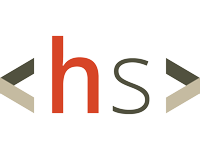The recent creation of DOGE (Department of Government Efficiency) sparked hope across the federal contracting community. A dedicated office focused on streamlining operations and reducing waste? Sounds perfect. However, as we've seen with their recent confrontation with CFPB, DOGE appears to be positioning itself more as a political instrument than an unbiased efficiency commission.
This is unfortunate, because the federal government genuinely needs clear direction on efficiency and modernization. The challenge isn't identifying problems - it's implementing practical solutions while navigating the complex landscape of federal regulations, security requirements, and workforce constraints.
Here are three key areas where meaningful efficiency gains are possible today:
Honest Competition Framework Let's be frank about government contracting: when agencies have a contractor they trust who delivers quality work at fair prices, they want to keep working with them. The current system forces agencies to pretend complete neutrality in recompetes, leading to wasted effort on all sides. Instead, we need a framework that allows agencies to openly signal their preferences in RFPs based on objective metrics like CPAR scores and fair market price evaluations. This isn't about limiting competition - it's about being transparent about the competitive landscape. Think of it as a pre-emptive advisory down-select: contractors can still bid, but they'll know upfront if they're facing an incumbent with strong past performance and competitive pricing.
Remote Work Infrastructure The federal government is missing a massive opportunity by not establishing a coordinated approach to secure remote work. While industry solutions like Nooks.Works are pioneering excellent options for secure remote access, they could be exponentially more effective with true government partnership - versus having to compete with the government at its own rules. We already have National Guard and Military Department facilities with secure networks (SIPRNet/JWICS) in nearly every major metropolitan area. With DCSA handling credentialing (or contracting it through an industry partner like Nooks) and GSA managing industry access fees, we could either enable private solutions like Nooks to leverage existing secure facilities or create a comprehensive government-wide program for remote access. Either way would dramatically expand secure workspace options nationwide.
Beyond just accessing talent, this approach offers significant economic benefits. Instead of spending millions on flights and per diem in the National Capital Region, these funds could support local economies across America. Communities with remote access points would see increased economic activity from high-skilled jobs, and contractors would save substantially on travel costs. And hey, we'd even reduce carbon emissions from all those flights to DC – though let's be honest, nobody's approving this because of the environmental impact. This isn't just about convenience or talent access - it's about distributing the economic benefits of federal contracting more equitably across the nation while reducing unnecessary travel expenses.
AI Secure Integration - It's Already Here Perhaps most pressing is the hesitation around AI adoption, despite having FedRAMP High solutions readily available. Platforms like Claude 3.5 Sonnet on AWS Bedrock and GPT models on Azure are already authorized for government use. The real efficiency gain here isn't about replacing workers - it's about augmenting inherently governmental functions. Instead of hiring contractors to handle routine documentation, analysis, and administrative tasks, we could leverage AI to help federal employees manage larger portfolios of inherently governmental work.
This last point deserves emphasis: The goal of AI adoption isn't to reduce headcount, but to shift human focus to high-value decision making. Currently, we're creating numerous potentially personal services contracts to handle work that AI could assist with, leaving fewer resources for core governmental functions. By embracing available AI solutions, we can help federal employees focus on the complex judgment calls that truly require human expertise.
The path to federal efficiency doesn't necessarily require flashy confrontations or headlines. It requires practical solutions that work within existing frameworks while pushing the boundaries of what's possible. DOGE's mission is admirable, but real progress will come from focusing on implementation rather than headlines.
What are your thoughts on federal efficiency initiatives? Have you seen successful examples of AI augmentation in government work? Have you seen advisory down-select process work the way it was intended? Have you seen ad hoc remote work programs created to support the geographically expanding talent pool?
#FederalContracting #GovernmentEfficiency #AI #FedGov #ClearanceJobs #GovCon




